One of my favorite crafty things to do is alter Altoids tins. I originally posted this tutorial on Cster, but I removed it when the site was closed. It’s by far the most popular post on my blog, so I thought I’d bring it over here for safekeeping. There are so many different ways to decorate these tins, and they’re great for holding gift cards, treats, and tiny craft supplies.
Supplies: White glue or Matte Finish Mod Podge, an old ink pad, heavy scrapbook paper (for this tin, I used paper from Graphic 45), a sharp x-acto blade, an inexpensive sponge brush, a straight edge, a ruler, a brayer if you have one, and an empty Altoid tin.
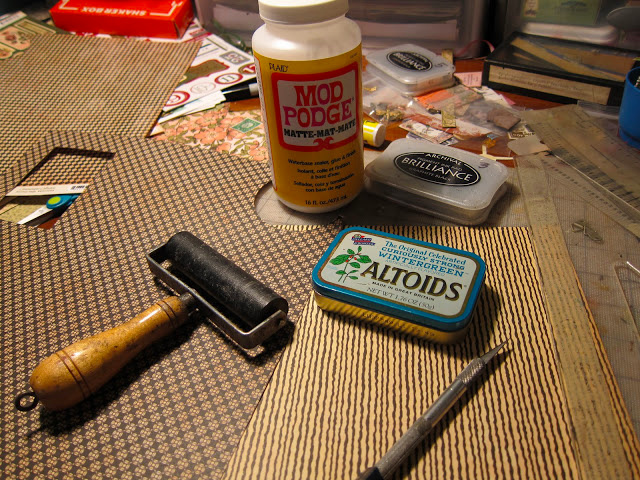
Figure out where your pattern will fall on the top of the tin by holding the tin and the paper up to a bright light. You’ll be able to see the shadow of the tin through the paper. Center any motifs or patterns in the paper. Make sure you pay attention to placement. Carefully flip the paper over with the tin in place, and trace around the tin. Remove the tin, and brush a good amount of Mod Podge on the top of the tin. Once you’ve got good coverage, flip the tin over and put it down where you marked the position. If you’ve got a brayer, use it to make sure the paper is adhered well. This tutorial was written before Altoids tins had embossed tops. You can purchase tins with flat lids here.
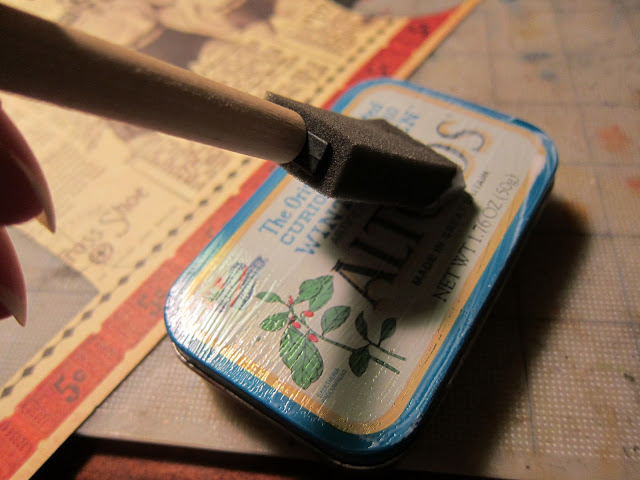
Now flip the tin and paper over, and with your sharp exacto blade (don’t be stingy; change your blade often!), carefully cut around the edge of the tin.
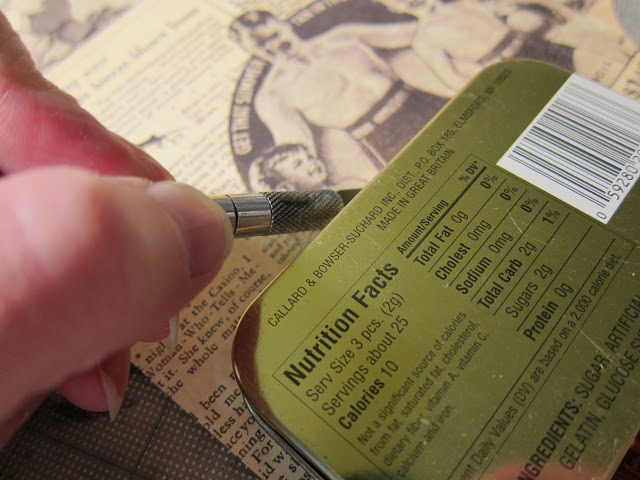
Look how perfect the top is! This way of cutting it out assures a perfect fit every time. *Before you go further, if you don’t have another tin to use for measurement, trace around the bottom of this tin twice with whatever paper you want to use for the inside (one piece for the inside top, one piece for the bottom).
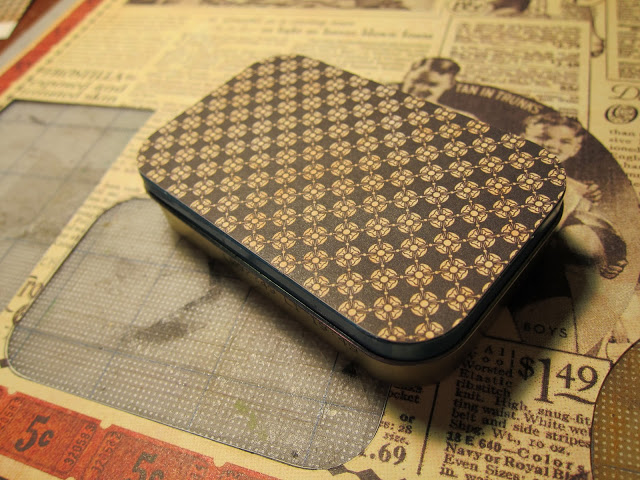
Now take your old ink pad and scrape it around the edge to get rid of the stark white edge of the paper and to give the top a little aging. This will help camouflage any little flaws that may occur when you cover the sides. Cover the bottom of the tin in the same way, and ink the edges.
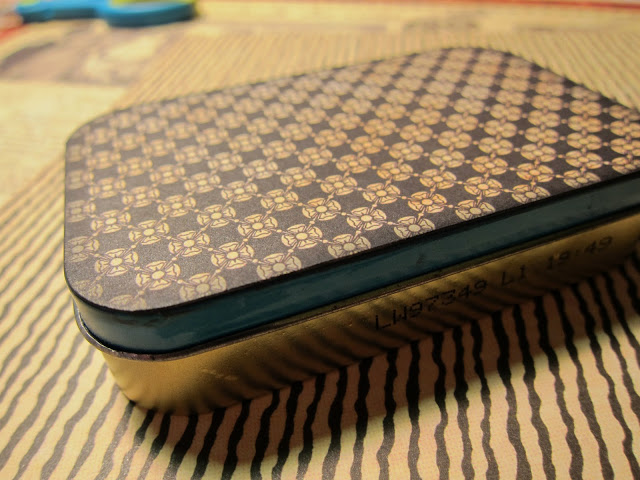
Very carefully measure the side. You will covering the sides with two separate pieces. You know the old saying: “measure twice, cut once”. Do it. Even though I have altered several tins, I measure each time, just in case the tin I’m working on is a little different from the last.
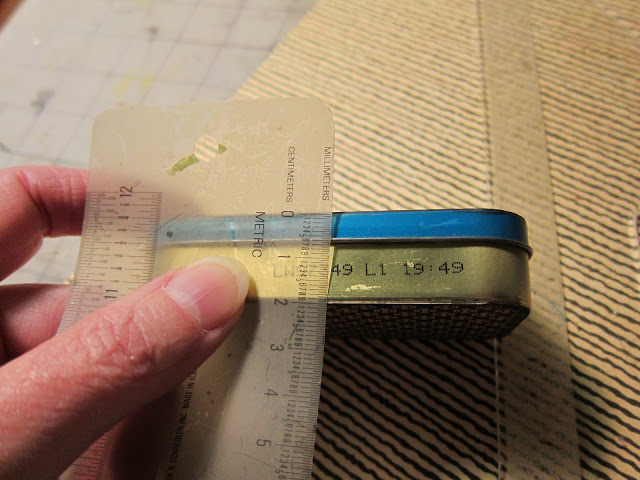
Making sure your measurements are very accurate, cut the strips needed to cover the sides. Once they’re cut, use your ink pad to distress the edges a bit before you begin to adhere them to the sides.
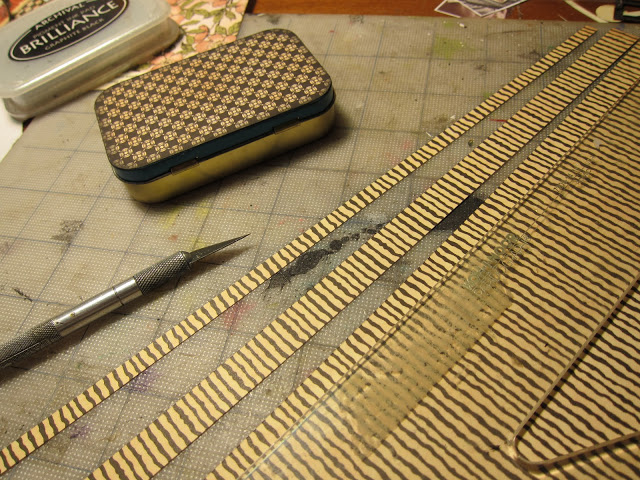
Let’s do the top strip first. Check to make sure you actually cut it to the right size to fit. Then, brush the Mod Podge on the narrow side of the top, and begin attaching the strip, making sure you butt the paper right up against the little lip of the tin. Pay special attention to the corners, as the paper may want to gap in those areas. Smooth as you go.
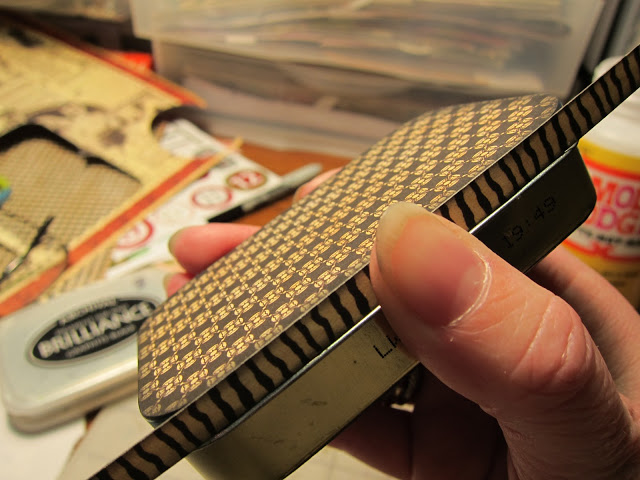
You’re going to have to cut a little around the hinges in the back. The best way to do this is to slice the paper carefully along the side of each hinge. Once you’ve made those four little cuts, use your fingernail along the long side of the hinge to fold the paper up on the hinge. You can cut the paper there if you wish, but generally folding it there will hide it well enough.
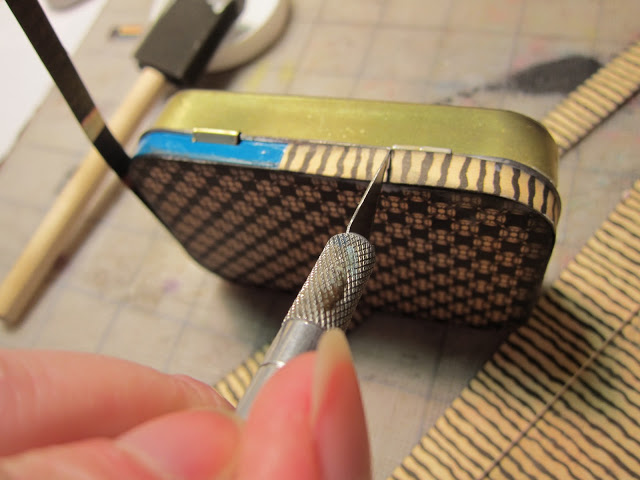
The strip of paper will be a little longer than you need. I find it’s best to trim off the extra little bit when you see how the pattern of the paper will look at the overlap. Try to make the seam as invisible as possible. When you do the bottom, make sure the patterns on the two strips match up as closely as possible. Little things like this make such a big difference! You’ll most likely have to cut out around the bottom hinge. Just use your blade to cut along each short side of the hinges, and then cut along the bottom of the hinge to remove the little flap you created. It’s very important that your blade is sharp for this step, as a dull blade will tear the wet-with-glue paper.

Now for the inside! If you haven’t already done so, trace the BOTTOM of a spare tin onto the papers you want to use to cover the inside top and bottom of the tin. For the inside top, cut just barely within the lines of your tracing. Fit the paper into the top and make sure you have a good fit. Trim a little if necessary. For the bottom of the inside, you will have to cut a tinier bit more inside of your tracing lines. Remember, you can always trim more, so be conservative at first, and keep fitting the piece as often as needed, until you get it right. Measure the side of the tin, and cut a strip to cover. Ink all your edges, and then adhere the paper to the bottom of the tin. Put the side strip in, tucked carefully under the lip. Start from the back, as pictured, so your seam will be in the front of the tin, where it will be less noticable. Pay attention to how the pattern falls. Really tuck those corners in tightly. The paper is going to want to pull out, so watch it and make those corners obey!
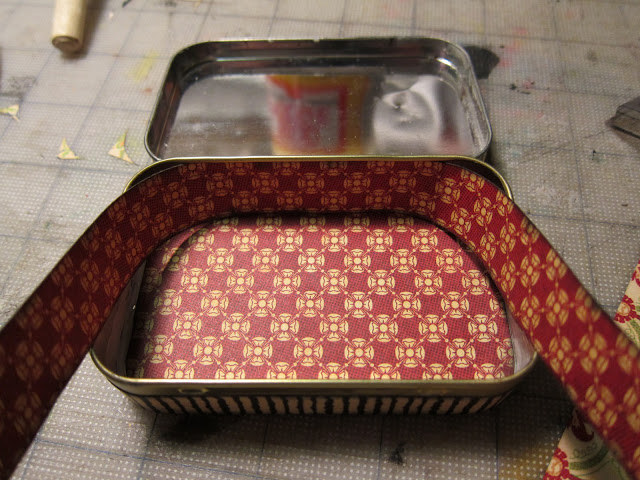
Put a good coat of Mod Podge on the bottom and sides to seal. Glue in the top paper, and seal it as well.
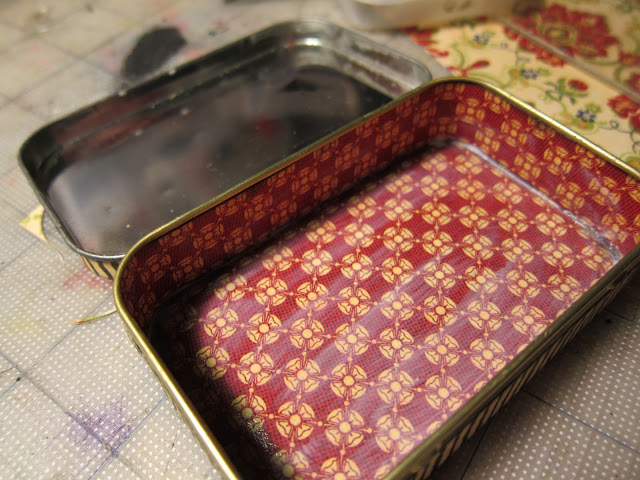
If you’re like me, you’re going to have a little Mod Podge residue on the exposed metal parts of the tin, both on the side of the tin and on the inside lip of the top, as well as on the hinges. Scrape all that off with your fingernail. Clean that bad boy up!
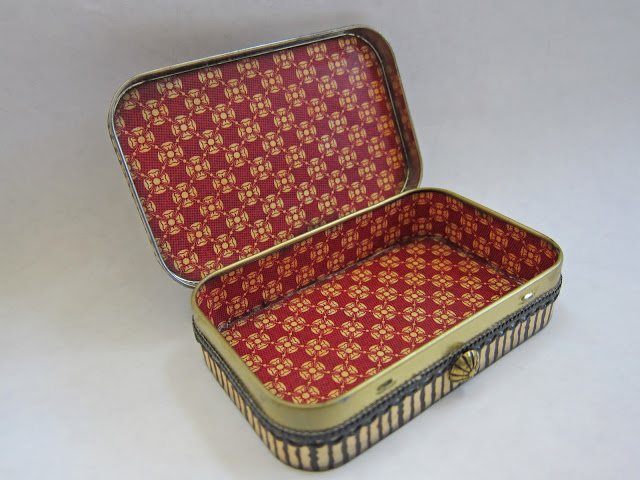
Now that your tin is fully covered, decorate and embellish. Find some good images to use. I used these images from Alpha Stamps collage sheets. To make sure your images fit perfectly, glue them on with parts hanging over the edges, and then flip over the tin and trim to fit. Make sure you edge the corners. Coat the entire tin with Mod Podge to seal any edges. When the tin is dry, you can further embellish it. I added some Dresden trim under the lip of the side, and a few metal bits. The Dresden trim was attached with Tacky Glue, but any metal parts are best adhered with E6000 glue. Here’s the finished project:
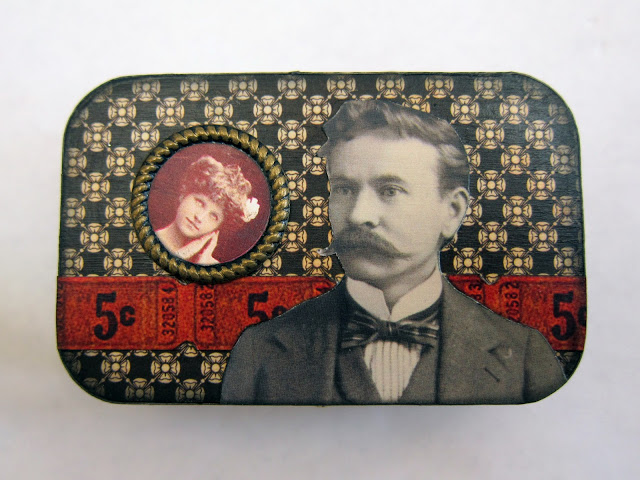
Sometimes I like using beads for feet, or ribbons for trim; the decorating possibilities are endless. Don’t ever throw those tins away. Make something!
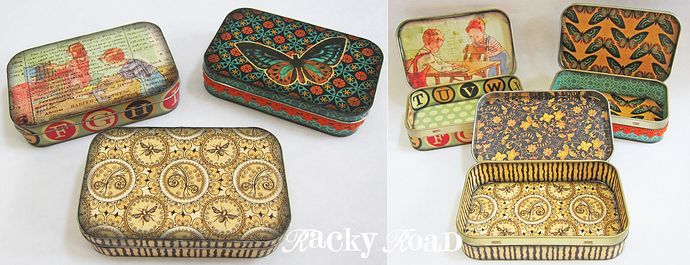

 It holds my vintage-y metal and wooden whimsies, and when I see it I am still delighted and a little awestruck that I have a racky altered tin in my possession.
It holds my vintage-y metal and wooden whimsies, and when I see it I am still delighted and a little awestruck that I have a racky altered tin in my possession.

